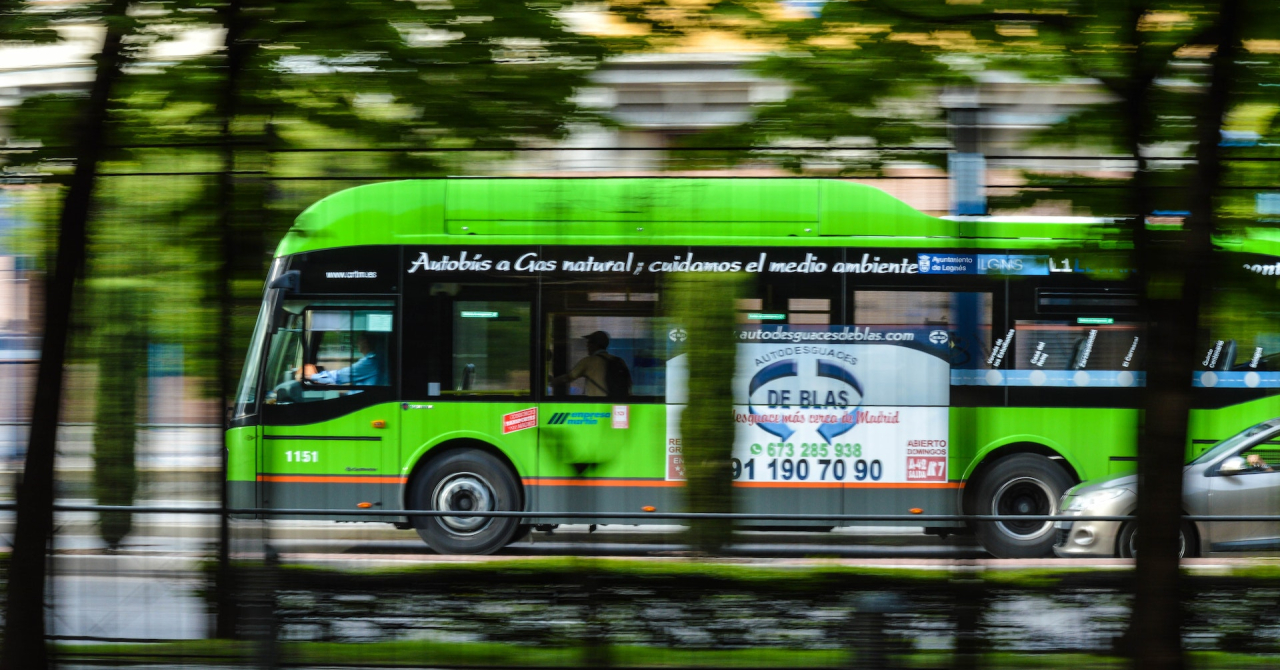What are electric buses
First of all, electric buses are essentially the same thing as regular buses, but with one major difference, which is that they run on battery or hydrogen, rather than fossil fuels.
Traditional buses are usually powered by diesel, which is very harmful and contributes to the release of greenhouse gas emissions.
Switching to electric buses can help countries dramatically reduce their environmental footprint, especially since in 2019, 26% of the total emissions released by the European Union were coming from transport.
Why do cities need electric buses
The most obvious answer is that cities nowadays can prove to be a challenging place to live in during hot summer days, when temperatures and humidity tends to increase and it is more accentuated by the pollution in urban settlements.
While not all heat is coming from buses, as cars and concrete buildings play their part, as well, improving in every area helps, even if just a bit.

Every big city in the world has public transport systems, as they are necessary for people who commute to and from work and school, among other activities.
Buses are an important part, because they can reach pretty much every corner, unlike tramways and subway systems.
Manufacturers of electric buses
There are more and more companies around the world looking to take their fleets electric, some of which are Solaris and Volvo.
Volvo's 7900 electric bus comes in both articulated and standard chassis, depending on the needs of the transport service operator.

The bus has a flexible charging system, as it can power either via regular charging stations, like electric cars, or through a pantograph, similar to a tramway of a train.
These electric buses got a battery capacity increase last year and they were also upgraded with improved sensors that offer better visibility all around them.
Electric buses advantages
This translates into better air quality, also an important advantage for buses that transit cities on a daily basis, but also for those that operate on a regional line.
As stated before, an electric bus makes virtually no noise, which means more comfort for the passengers, but also for the passers-by and people who live in bus-frequented areas.
An electric bus also has lower maintenance cost, just like an electric car, due to the fact that there are fewer moving parts that require constant maintenance and testing. There is no need for things like an oil filter for the electric motor of a battery-powered bus, for example.
Some manufacturers claim that an e-bus can save an operator as much as 125.000 USD worth-of maintenance cost over the course of its lifespan.
Then there are running costs, which are also significantly lower. Depending on the city/region that an electric bus operates in, electricity can be cheaper than gas, which means that the fuel will cost less over the course of the bus' operational lifespan.

Bus maker Proterra claims that a bus can save up to 50.000 USD over five years of operation in terms of fuel and maintenance.
The drawbacks of electric buses
The first and major drawback when it comes to electric buses is their upfront cost, which is higher compared to their fossil-powered counterparts.
While some battery-powered buses can offer around 300 kilometers of range, their overall range is limited, especially if they need to travel at higher speeds outside the city.
Furthermore, charging an electric bus can take longer, due to the fact that its batteries are much larger than those found on electric cars.
Fuel cell-powered buses can be a better solution in this case, because they can travel more before needing a refill and that doesn't take as much as charging a set of batteries in the first place.
Still, wireless charging can be a solution for battery-powered buses, since these systems can be installed at stoplights and at bus stops, allowing for a quick recharge.
Overall, battery and hydrogen-powered buses are a necessity in today's cities, as they can help urban settlements get closer to the net-zero goals.
Their zero emissions and virtually zero noise levels can also improve the health and overall well-being of city dwellers, another strong suit of future green cities.
 Mihai - Cristian Ioniță
Mihai - Cristian Ioniță












Any thoughts?